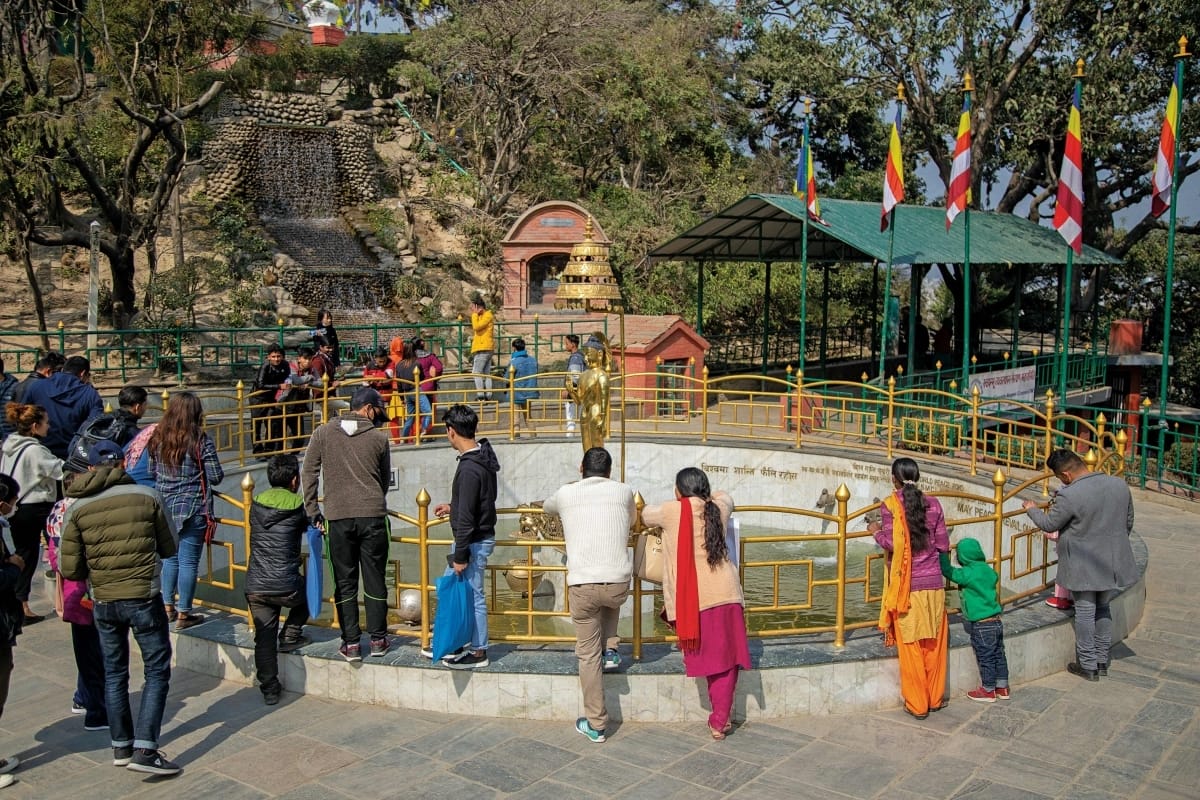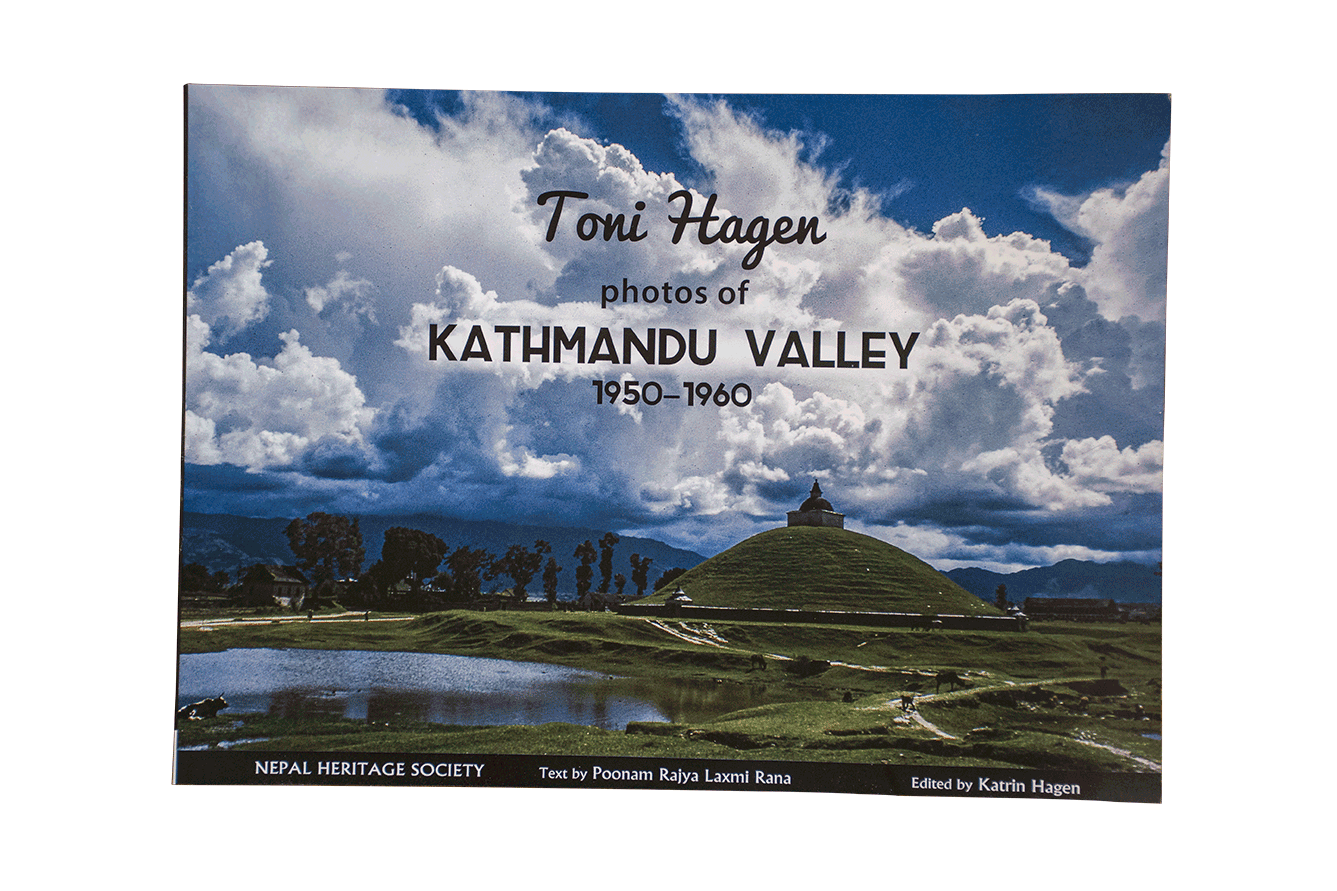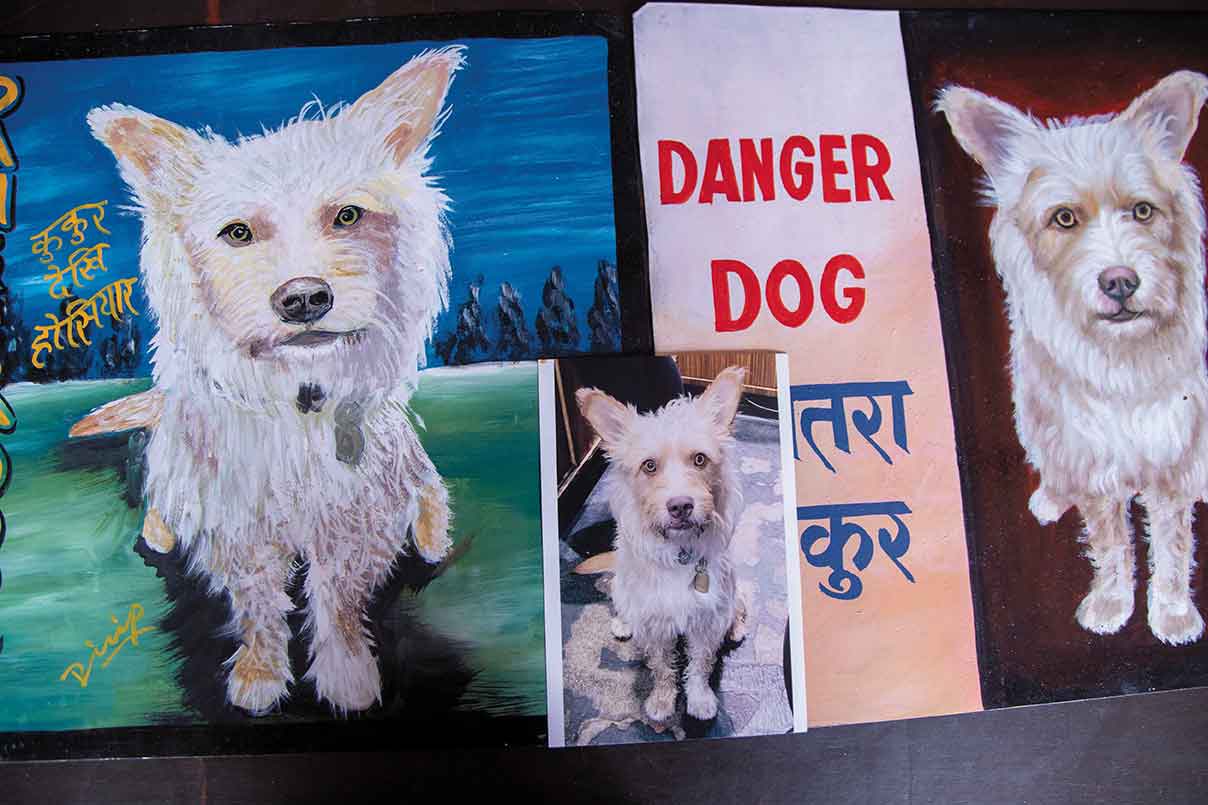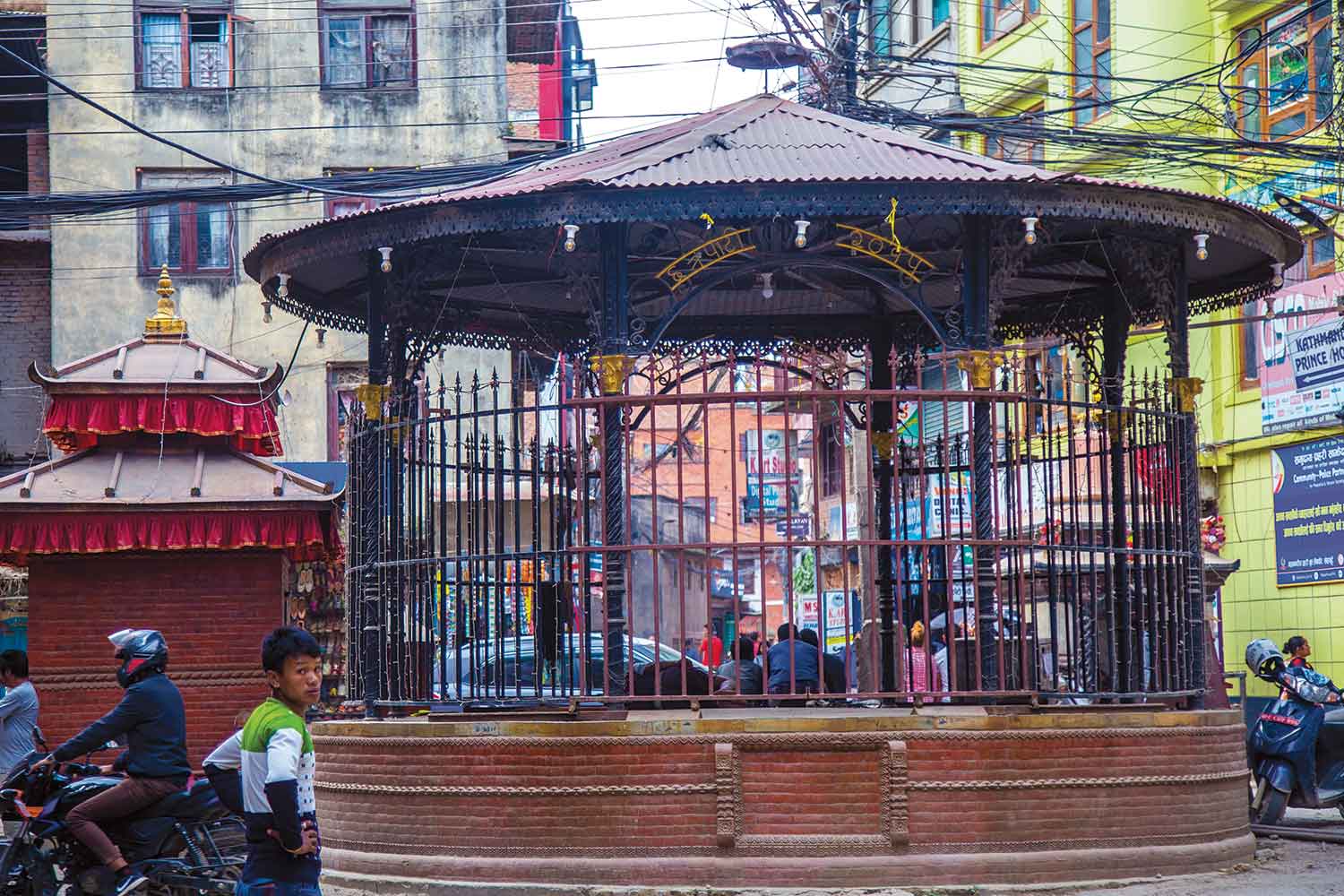The British emissary Colonel William Kirkpatrick in his An Account of the Kingdom of Nepaul, wrote, There are nearly as many temples as houses, and as many idols as inhabitants.” That might have been his general impression, but he was not far from the truth.
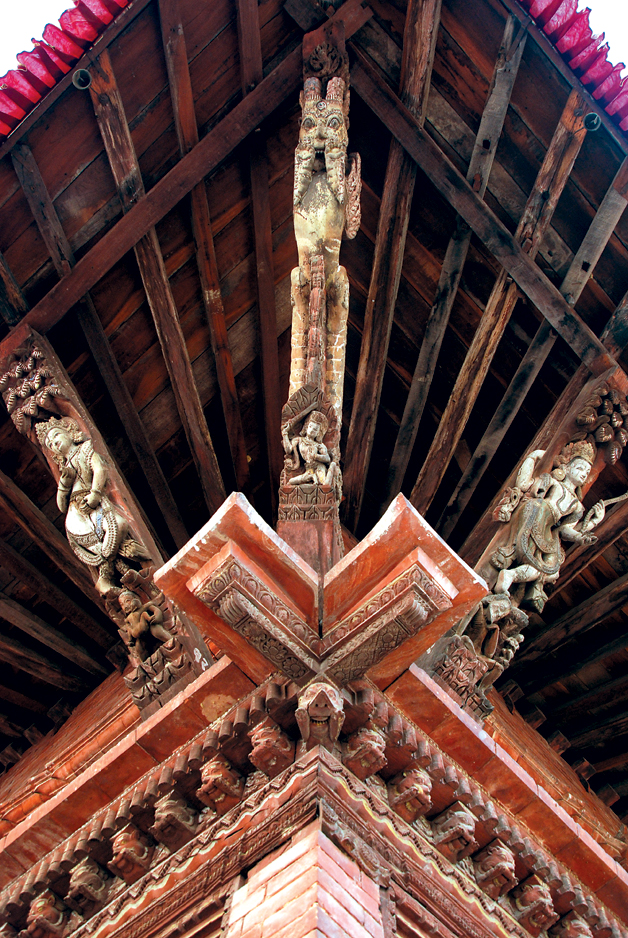
The Yantra
The construction of any edifice begins with the making of a blueprint of the structure in question. In the case of temples, it all starts with the Yantra. Yantra as esoteric a word as any. But hold on, unlike other esoteric words that fail to live up to expectations, this one is the basis from which something truly remarkable comes forth. And yes, the word itself holds so much symbolic meaning, a whole book has been written on it, perhaps one of many. The book in question, written by Madhu Khanna, is titled Yantra: The Tantric Symbol of Cosmic Unity. It is a title that will unquestionably put to rest any doubts about the esoteric aspect. Khanna describes a yantra as, “a geometrical diagram with abstract symbols.” According to him, it comes from the Sanskrit word, yam, meaning “To sustain, hold or support the energy inherent in a particular element, object or concept”. A yantra consists of the dot (bindu) at the center, the triangle, the square and the circle and is regarded as a sacred enclosure of Ishta-devata (‘the chosen, the tutelary deity’). The Kularnava Tantra tells us that “As body is to the soul and oil is to the lamp, so yantra is to the deity.”
The Architectural Yantra
Yantras can be of different types: Tantric (most varied and numerous), Vedic (most ancient) and Buddhist mandala (meaning ‘circle’), and they can be grouped according to usage. According to Khanna, some architectural yantras are used as the main analogues for the ground plans of temples. “Most ancient manuals stipulate that the ground-plan of every Hindu temple must conform to a single graph similar to the Vastu Purush Mandala,” he says. This is really a square of many other squares that can also be converted into other primal forms. The simplest arrangement is 64 (8x8) or 81 (9x9) squares, and the more complex ones can be of 1,024 squares. The central nucleus of 4 or 9 divisions is the zone for the principal deity; the 12 squares around it, seats of divinities related to directions of space; and surrounding this, 32 divinities associated with celestial bodies.
According to Architect Purusottam Dangol, author of ‘Elements of Nepali Temple Architecture’, this square shaped yantra is a map of the universe and also a geometric projection of the world. He states, “The 3-dimensional structure arises from the 2-dimensional plan with the mandala as the blueprint.” A little confusing perhaps, but Khanna clarifies it this way, “Architectural yantras are not ground plans for temples but they schematize the principles on which the sacred precincts of the temple are constructed.” The construction of a temple begins with the leveling, purification and consecration of the ground, after which the Vastu Purush Mandala is ritually drawn on the site.
2,500 Temples and Still Counting
Describing the Kathmandu Valley in 1811, the British emissary Colonel William Kirkpatrick in his An Account of the Kingdom of Nepaul, wrote, “There are nearly as many temples as houses, and as many idols as inhabitants.” That might have been his general impression, but he was not far from the truth. Some have even gone so far as to claim that there are more shrines and temples in Kathmandu per square kilometer than anywhere else in the world. According to experiencenepal.blogspot.com there are over 2,500 big temples and monuments in the valley. A large number by any standards one would think!
Of the different types of temples found here, the most prominent is the tiered roof type (often referred to as pagoda type), a magnificent example of which is the Pashupatinath Temple (a World Heritage Site). According to Kirkpatrick, it was built by the 4th Prince of the Suryavanshi Dynasty in the 4th century AD. The oldest of the pagoda type temples in the Kathmandu Valley (according to the Kathmandu Valley Preservation Trust) is the Sulima Ratnesvara Temple in Sulima, Patan. Changu Narayan Temple, some distance from Bhaktapur, is also considered one of the most ancient. The pagoda type temples can be either Buddhist or Hindu. In the case of the former they are called mandir whereas the latter are called either bahal, vihar or bahi. The Ratnakar Mahavihar Temple is a magnificent three-tiered temple in Haklhvihar, Patan. It houses the Sakyamuni Buddha, as does the beautiful Golden Temple in Patan Durbar Square.
Other commonly found temple types are of the stupa and the shikara styles. There are also a number of dome style temples in the valley. The Buddhist stupa is a solid hemispherical mound of earth, bricks or stones, with a square shaped structure at the top, each side of which is painted with a pair of eyes representing the eyes of Buddha. Some famous examples are Swayambhunath (a World Heritage Site is said to be 2,000 years old) and Boudhnath (another World Heritage Site and the world’s largest stupa). There are four big grassy stupas at the four corners of Patan which are said to have been built by the Indian Emperor Ashoka when he came to the Kathmandu Valley on pilgrimage some 2,250 years ago.
The shikara style is Indian in origin and is a tall pyramidal structure with five or nine sections, the final section having a bell-shaped top. One famous example of this is the Krishna Mandir of Patan, built in 1637 AD. An unusual stupa is the Maha Buddha Stupa in Patan because it is the only major stupa in Nepal that is based on the shikhara style and is primarily built of brick. The temple housing the Living Goddess Kumari in Kathmandu’s Durbar Square is said to be built in the harmaya style. The courtyard is surrounded on all four sides by residential buildings and the deity of the temple is placed directly behind the front gate. There are no other deity figures inside because it is the home of the Living Goddess.
Despite the rich variety of temples found in this, the ‘Valley of the Gods’, there is a clear predomination of the tiered roof or pagoda type temple, reviewed here in a more detailed manner from an architectural perspective. The tiered temple is rarely octagonal or circular in shape. Most commonly, they are either square or rectangular with the latter generally dedicated to the tantric gods and goddesses like Bhairav, Bhimsen, and Bal Kumari, amongst others. One example is the Akash Bhairav Temple in Indra Chowk where the image of Bhairav is displayed outside only for a week during the Indra Jatra (festival to Indra), in the month of September-October. Other examples are the Bagh Bhairav Temple in Kirtipur and the three-storied Bhimsen Temple in Patan Durbar Square where one has to climb up to the first floor to worship the deity. According to the young pujari (priest) Rakesh Kapali, devotees can also go up to the third floor on Saturdays. As a matter of interest, certain tantric rites are also performed during the worship of Shiva in Pashupatinath Temple, although it is a square shaped temple.
The Bricks
Historically, the load bearing walls of temples were built of mud mortar, then painted with a mixture (silay in Newari) consisting of surkhi, lime, molasses and ghee. However, the making of silay was an expensive and complicated process and it has since become a ‘lost art’ according to the architect Purusottam Dangol. In the last century, yellow clay (mahasuca) was more often used for mortar. The skills of the artisans responsible for the creation of such beautiful temples in the valley was no more evident than in the molded bricks that went into their making. For decorative windows and cornices supporting the lower ends of the slanting roof struts, the most commonly used molded fire bricks were: ma-apa – traditional bricks with one end and one edge glazed; ba-apa – moulded and decorated bricks; ku-apa – corner bricks; dachi-apa – both wedged and glazed; bupa-apa – stretchers and trah-apa – closers.
Additionally, various types of ba-apa were used in different positions; e.g., cornices, lintels and plinths. In the cornices, the different types of ba-apa used were: kahsimvaha-apa – projecting bricks with flower design and lotus leaf patterns; mvah-apa – with slanting and throating edges; phecu-apa – with slanting edge; palehah-apa – lotus root design; dhalimvah-apa – with stylized beam ends and patterns like skeleton face, lion faces and flowers; sa-apa – with egg patterns; jhaller-apa – with frill designs; lhah-apa – curved molded bricks (biggest in size, they support the lower end of slanting roof struts and rest on a hand shaped wooden piece called lhahphvah); mikhaphusi-apa – used in the lintels of decorative doors and windows, and nahgrah-apa – with snake patterns.
The wall thickness varied according to the number of storeys. Usually, structured walls were constructed with three layers of bricks with a few cross bands. Sun dried bricks were used on the inner part and the middle had brick fragments, while wedge shaped bricks (dachi-apa) were used on the outer surfaces, which protected the clay mortar from being washed away by the rain. Also, because they were wedge shaped and less porous, using dachi-apa ensured minimum joints and a smoother surface. In addition, when laid tightly, the gleaming brown dachi-apa provides for a smooth backdrop for sculptured effects and woodcarvings.
The technical skills of the Newari artisans even in those days, when probably half the world, including America, were still living in thatched lodgings or in tents, was simply amazing. Not only were they adept in the architectural and engineering aspects, but the Newari artisans were equally skilled from the aesthetic angle. Guess this is what peace can do for a civilization. The amount of detail that went into the making of bricks can be said to be an indicator of the artisans’ pride in their work. One can also surmise that such creativity could also have been assisted by long periods of peace and tranquility before King Prithvi Narayan Shah and his war mongering army succeeded in disturbing the peace and tranquility of the valley and its skilled people. Later on, growing western influence, especially during Jung Bahadur’s time, added to the chaos and certainly began the decline of the valley’s traditional artistic outlook. Thankfully, the bricks still continue to be made and one perceives, at times, a rejuvenated enthusiasm to increase their use in residences and other buildings.
The Woodwork
Timber was liberally used to make pillars, beams, brackets, struts, doors and windows, roofing, etc. Sal timber (Shorea robusta) was traditionally used for most structures and decorative purposes although there is evidence that pine wood was also used for making rafters. Timber pegs and lap joints (chukul) were used to connect the different timber frame constructions like the wall plates, corner posts and rafters. And of course, one mustn’t forget that it is the intricate woodwork that really distinguishes Newari architecture from the rest. Temples with circumambulatory paths have isolated wooden columns on the outer side that can be either single rowed or doubled rowed depending on the temple’s size. Usually, these columns are supported by dressed natural stone (ilohan) or a wooden threshold. The wooden columns support a wooden bracket, which transfers the load from the lintel and beam to the column. The columns are joined to the beams by thick wooden struts at their upper extremities and the single length beam normally extends beyond the angled columns with the extremities often carved into dragon’s heads.
The Roof
Roofs are mostly clay tiled, but sometimes the top roof or all the roofs may be covered with metal (usually copper). The design and details of all tiered temple roofs is more or less the same. The skeleton consists of radiating rafters tied together by wall plates at the top of a horizontal beam that is in turn supported by inclined struts. Traditionally, the connection between rafter and wall plates and between rafter and horizontal beams was achieved by using two timber pegs (chukul), inserted to brace the rafters against the horizontal members. Any damage to the timber pegs can result in the roof collapsing.
Horizontal wooden planks are placed over the rafters, and then on top of this are laid four to ten centimeters of thick clay onto which special tiles (aenpa) are pressed. Other special tiles, called kopu and doku, are used for the ridges and valleys. Upwardly curving tiles are placed at overhanging corners and these can be either of clay (on clay tiled roofs) or metal (on metal roofing). The curves often have bird designs and a border of small bells are almost universally found around both clay or gilded roofs. In the most elaborately metal-decorated temples one will find hanging metal borders called kikkimala (garland of little bells). Both roof levels of the Matsyendranath Temple in Jana Bahal of Kathmandu have lovely kikkinmalas and one can observe figures of four powerful gods, Birudhaka, Dhritastra, Vaisravana and Viropaksha, at its four corners. Similar dominant figures can also be seen at some other temples such as the Min Nath Temple in Tangal, Patan, where two demonic figures stand guard at the front gate and two others at the temple entrance. This temple has copper sheeted roofs, as has the Matsyendranath Temple in Ta Bahal of Patan. By comparison, the two level roofs of Pasupatinath Temple are of copper with gold covering.
The Struts
The massive roofs or over-hangs are supported by struts (tundal) having many structural details and, in a way, the struts are perhaps the most fascinating part of temples, decorated as they are with some pretty graphic carvings not only of gods, goddesses and animals, but also a lot of erotic subjects. Struts can be either side struts or corner struts and the heavy corner struts have carvings of powerful beasts. The struts have three parts: the top is decorated with tree branches with foliage, the bottom has rocks, foliage or sexual subjects, while the middle has a three dimensional image of a god. Beside other powerful deities, figures of the eight mother goddesses (asta matrika) are most commonly depicted. Collectively they are called Nav Durga, while individually they are Rudryamani, Brahmayani, Vaishnavi, Indrayani, Kumari, Chamunda, Varahi, Mahalaxmi and Ugrachandi.
According to Lonely Planet Nepal, “The most interesting wood carving on Nepali temples is on the roof struts, or tunala, and on many temples these carvings include erotic scenes. These scenes are rarely the central carving on the strut; they are usually the smaller carvings at the bottom of the strut, like a footnote to the larger image. Nor are the carvings sensuous and finely sculptured like those at Khajuraho and Konark in India. In Nepal, the figures are often smaller and cruder even cartoon like.” Various mythologies abound regarding the erotic carvings and since they are after all but myths, one should regard them with some discretion. One myth says that the erotic figures were carved to protect the temples from the wrath of a great puritan queen during the days of the Mahabharata War; another says that Hinduism’s most lusty god, Indra, will not let his bolt (bajra) strike places where there is something erotic (thus protecting such temples from lightning).
Another hypothesis is that since many of the Hindu temples are based on tantra, with tantric gods inside, the use of eroticism can be explained by the fact that in tantra, maithuna (sex) is one of the five tantric concepts of the five ‘m’s’ which also include matsya (fish), mhansa (meat), mudra (posture) and madira (wine). The Char Narayan Temple in Patan Durbar Square is a voyeur’s delight, the eroticism of the carvings a challenge to the senses, as they surely must have been to the highly imaginative creativity of the artisans. One can see such erotic carvings (some of which are very graphic) not only on other temple struts, but also on the struts of some patis (verandahs); for example, the sorhakhutte pati in front of Bhimsen Temple in Patan Durbar Square. Equally interesting carvings can be seen on the struts of the 12th century Indresvara Mahadeva Temple in Panauti.
Structurally, diagonal struts have a mouth shape cut at the head to support wall plates and level cuts at the base to rest on the capping of cornices. The cornices themselves have three layers – chuva (upper layer), dhalimvha (middle layer that is carved in the shape of an animal or demon head or mythical bird) and khicava (the lower level that has either a naga (snake) or dog’s teeth pattern). The lowermost parts of cornices usually have egg (asa) or walnut (khvahsigrah) patterns frilled by lotus flowers.
The Gajura
The rafters of the topmost roof meet at a central point – this is covered with a pinnacle (gajura) made of burnt clay or gilded sheet copper. Symbolically, the most important part of the temple, the gajura’s style is determined by the temple’s size, shape or the nature of the primary deity. During construction, the pinnacle is placed over a timber post (galachha) supported by a horizontal beam (galahsi) that is fixed to a brick wall. The base has multiple flat layers of varying heights ending with upturned corners. A pinnacle generally has four parts: the jewel, the kalash, the lotus and the bell, which occupies the largest portion of the pinnacle. Many temples have a sacred umbrella over the pinnacles although not over the ones made in plaster. The Shiva Parvati Temple in Durbar Square, Kathmandu, has a triple pinnacle with three umbrellas. The Maju Deval Temple in the same square has a special pinnacle in which the base is in the shape of a Buddhist stupa and in fact, this is the only example found of any Buddhist symbol on a Shiva temple. The Bagh Bhairab Temple of Kirtipur has a total of 18 pinnacles, one each on the first and top roofs, six on the second and ten on the third. The three-storied Ratnakar Mahavihar in Patan has three gajurs, each at the top two levels. Very heavy looking gajurs adorn the Min Nath and the Matsyendranath Temples of Patan.
The Pataka and the Torana
A pataka is a metal banner that descends from the pinnacle past the edge of the lower roofs; they are found only at some temples. The pataka (dhvaju) is mostly made of gold, silver or copper and the eight auspicious symbols (asta mangala: endless knot, lotus, banner, wheel, holy water jug, pair of fish, parasol and conch shell) are popularly used as its design. They are supposed to be pathways for gods to descend down to earth. The intricately designed patakas of Ratnakar Mahavihara and Min Nath Temples in Patan are very impressive.
Toranas are placed over temple doorways. They are semi circular, flat and made of either wood or wood plated with metals. In some temples toranas are found above all the doors, windows, niches and even between columns. Usually the carvings include a centrally placed deity and on both sides of it, a chhapu, a fierce beast biting down on a snake; a gaye, a goddess standing on a makara (sea monster); Jamuna, a goddess standing atop a kachuwa (tortoise); and an apsara, an angelic female holding garlands. Some of the most impressive toranas can be seen at the Matsyendranath Temple in Kathmandu, and at the Changu Narayan where a garuda consuming a naga at each side of the mouth dominates the top of the torana. The Bagh Bhairava Temple in Kirtipur has a finely carved wooden torana with Bagh Bhairava at the center flanked on the left side by Ganesha and on the right by Kumar. The Ratnakar Mahavihar in Patan has some heavily carved wooden toranas.
The Doors and Windows
The temple doors are of wood and normally only about five feet in height so that one enters bowing to the gods inside. They have massive locks at the bottom and are usually double shuttered, with the shutters being patterned and perforated screens. Sometimes the doors are carved or embossed in metal, and sometimes they are left plain. Other times large eyes are painted onto them. The outer door frames are designated according to certain design criteria. The design of outer frames reveals various water subjects like makara (water beast); water goddesses Ganga and Jamuna, as well as Surya and Chandra (sun and moon); the guardian god, Mahankala; and geometric, floral and animal patterns. Windows are decorative rather than functional. Those on the upper levels are centrally placed in each direction and are either latticed or finished with vertical blinds with a carved image of either the main deity or his/her vahana (vehicle) at the center. The most common window types are the ga jhya (blind windows) and the pashukha jhya (row of small windows in odd numbers) on the first level. Carved on these are auspicious figures like those of peacocks, nagas, lotus flowers, vajra, kalash, etc. In addition, small wooden niches in the walls, each about two feet high and 18 inches wide, hold small deity figures. The four main doors of Pasupatinath Temple are all covered with silver sheets. The western door has a statue of a large bull (Nandi), also covered in gold.
The Plinths
Purusottam Dangol differentiates between two types of shrines in temple structures: the ‘genus loci’ (housing a deity ‘found’ at the site) and the other, housing an ‘installed’ deity. As a matter of interest, the ‘genus loci’ variety are never raised on plinths since the god in question is supposed to have emerged from the earth, while the ‘installed’ gods are incorporated on stepping plinths. Plinths not only served to further aggrandize the gods, but also as a protection against damp and flooding. Most temples stand on multiple receding plinths whereas the smaller ones, on a single plinth. The Taleju Temple in Durbar Square of Kathmandu has 12 shallow plinths. The five-storey Nyatapole Temple of Bhaktapur stands on a set of five high steeped plinths. On each of the terraces stand different impressive figures: two famous wrestlers, two elephants, two lions, two griffins and Baghini and Singini (tiger and lion goddesses). The Maju Deval Temple, dedicated to Shiva, in Kathmandu’s Durbar Square, is set atop nine levels of plinth. The Trailokya Mohan Temple on the left of the Kumari Bahal (home to Kumari, the Living Goddess) has five plinths and a three-tiered roof.
Orientation, Proportion and Height
The orientation of the temples was according to the guidelines as prescribed in the ancient text, Devaraya Rakshana (The Protection of Temples) in which it was fixed by dividing the side length of the temple by eight. The remainder of this division determined direction beginning in the northeast (rikta or value zero): one for east, two for southeast, three for south, four for southwest, five for west, six for northwest and seven for north. Even numbers were considered inauspicious and therefore intermediate directions were to be avoided. The design module (ya) was determined by guidelines also prescribed in the Deveraya Rakshana according to which, for two-storied temples the module was six; for three-storied, nine, and for five-storied temples the module was fifteen. For example, the module of nine would be marked at the base when building a three-storied temple and this would be equal to the temple’s width. Reduction in size of each successive storey was calculated by reducing the width by three modules. A design module of nine, for instance, would have a width of six modules in the first storey and three modules in the top. The height of temples was determined according to Matsyapurana (another ancient text) which prescribes that the total height should be two or three times the width of the temple plan. The Nyatapole Temple in Bhaktapur at just under 100 feet is the tallest of the pagoda type temples in the valley, while the five-tiered Khumbeswor Temple, dedicated to Lord Shiva, is the tallest in Patan.
The making of the magnificent tiered temples of Nepal, particularly those in the Kathmandu Valley, was no small affair. Taking into account the attention given to even the minutest detail, one must surmise that in addition to a high degree of skill, equally great dedication must have been called for. Today, centuries after they were built, these splendid architectural monuments stand as proud testimony to the commitment and artistry of the Newars of the Kathmandu Valley. But in spite of all the many details that are available today, it is interesting to realize that there is still no knowledge about the foundation itself since none have been excavated so far, according to authoritative sources.
Several sources were used for this article. For further detail please see: Elements of Nepalese Temple Architecture (2007) by Purusottam Dangol and Yantra: The Tantric Symbol of Cosmic Unity (2003) by Madhu Khanna.
Tired of the three Durbar Squares?
As Nepalese, we are all too familiar with the squares of Kathmandu, Bhaktapur and Patan whether it’s a...


